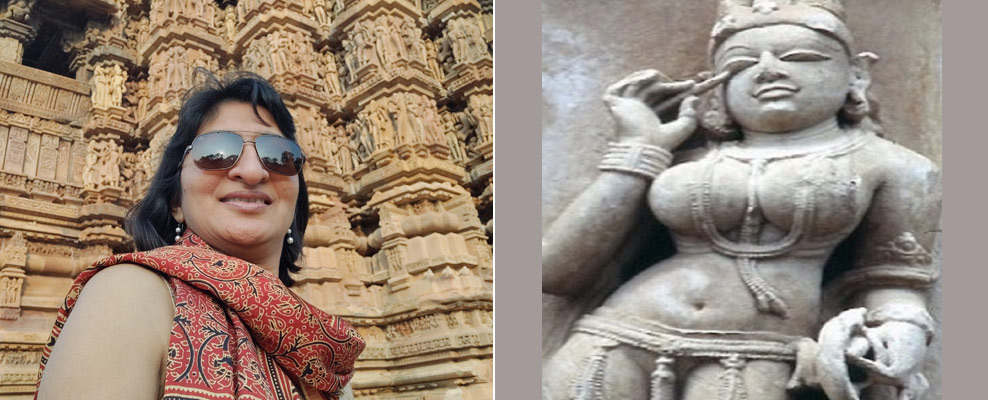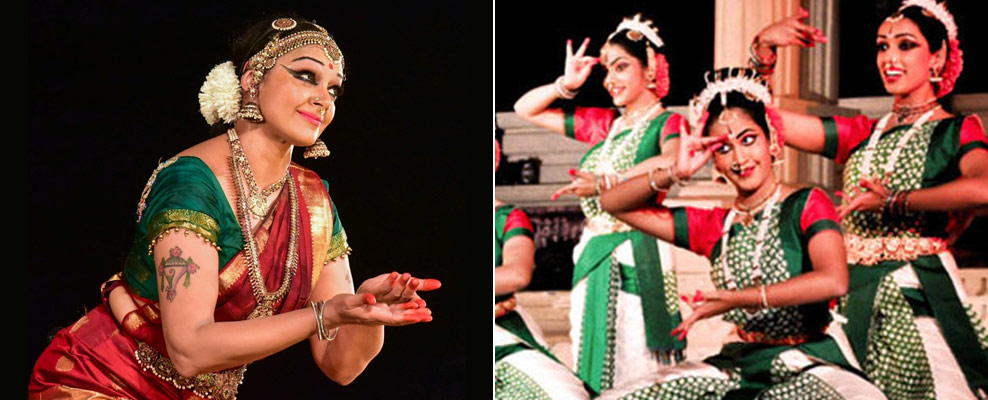The trouble with visiting a place as famous as Khajuraho in the age of Instagram and other social media is that you are already over familiar with its visuals and the ‘wow moment’ can be underwhelming.
But despite the temples of Khajuraho being written about and showcased in all kinds of travel magazines and guides, I found myself going “wow”, not once but many times in a single day.
Khajuraho is a small town really, that has been put on the world tourism map, thanks to its 12th century temples built by the Chandela dynasty.
So who were the Chandelas? Initially vassals of the Gurjara-Pratiharas, the Chandelas became sovereign from the 10th Century and under their ruler Yashovarman started reigning over the territory of Bundelkhand. Though they victoriously battled the Muslim invasions in the 11th century, their rule came to an end by the 13th century. But the dynasty was devoted to art and architecture and besides contributing dozens of forts, palaces and temples, had gifted the world the 85 stunning Khajuraho temples that today stand reduced to about two dozen but are a UNESCO World Heritage site.
Khajuraho gets its name from Khajuror date palm. It is believed that the temple gates had two golden date palm trees, after which they came to be known as Khajuraho.

Located in the Chattarpur district of Madhya Pradesh, this group of Hindu and Jain temples follow the Nagara style architectural symbolism and are famous for their erotic sculptures. Built out of sandstone, the temples are intricately carved with elaborate detailing. Each of the temples is beautifully laid out as per Vastu Shastra with most of them looking and opening towards sunrise. Almost all the temples consist of a garbagriha (sanctum), an antaral(vestibule) and a mandapa or an ardhmandapa (entrance porch). Set against immaculate, lush green gardens that are full of ravishing bougainvillea, they are a sight to behold.
Once we got off the car a short walk brought us to the entry gate of the temples. Guides were aplenty and I’ve always found it worthwhile to hire one, if not for the information and insight they vend, then certainly for their story telling ability and a peek into the local dialect and language. Most of the area though had plaques that were quite informative.

We started our wanderings from the Western Group of Temples. The temples of Khajuraho are divided into Eastern, Western and Southern groups with the Kandariya Mahadev temple, dedicated to Shiv being the largest. We found that though erotic sculptures remained their claim to fame, such themes occupied only about 10% of the total temple sculptures and were not given any over emphasis at the cost of other sculptures that depicted common folk such as musicians, potters and farmers and of course Gods and Goddesses. Unless one looked hard or was guided, one could even miss them. What made me wince though, was how much of the art including precious statues of Nandi – the bull, had been mutilated during the invasions.
Ancient India is replete with folklore and stories and Khajuraho is no exception. It is believed that Chandravarman, who established the Chandela dynasty was born to a beautiful maiden Hemvathy, who was seduced by the Moon God himself, while she was bathing one evening. It was in the honor of his mother that Chandravarman later built these gorgeous temples with passionate engravings. The other story prevalent around the temples is that since more and more people were coming into the influence of Buddhism and turning ascetic, these sexual engravings were done to rekindle their passions and encourage them to carry on in their worldly ways.

Our visit to Khajuraho happened to coincide with the Annual Khajuraho Dance Festival that sees a large gathering of locals as well as tourists who come solely to witness the resplendence of Indian classical dance, performed by the country’s reining artists. We were lucky enough to catch a Bharat Natyam performance by Shobana Pillai. This also meant that there were a few hundred extra tourists exploring the temples as well as ongoing handicraft and other melas. But such is the layout and expanse of the temples that at no point does one feel cramped for space. It is also worth mentioning that despite the crowds, the entire complex looked clean, green and largely well maintained. Towards the evening we ventured into the Old Village or basti area to see the Brahma Temple in the Eastern Group of temples. The Brahma temple is set against a lake, locally called the Khajur lake, and is far humbler, squatting on the roadside without an elevated porch, compared to its counterparts. The specialty of course is that it is dedicated to Lord Brahma who is traditionally not worshipped and has very few temples to his name.
We also hopped into a delightful shop, called ‘Curio House’ just opposite the Brahma Temple. The shop turns out to be part of a residence and the owner, a wizened old fellow, proudly displayed a wide array of rare artefacts and collectibles, mostly of brass and copper.
Our final visit for the day was to the Jain Temples, also in the Eastern Group of temples. The added attraction here was that there was a museum attached to the temple, dedicated to Jain history and religion, showcasing the contribution of Jains to art.
Affordable, delightful and worth every ounce of the hype, Khajuraho is a must visit. And what’s more, you can always club your visit to this temple town with a sojourn to the nearby wildlife parks, to make the most of nature and culture.
Photo credits: Banner Left: Supriya Newar; Banner Right: indianholiday.uk
